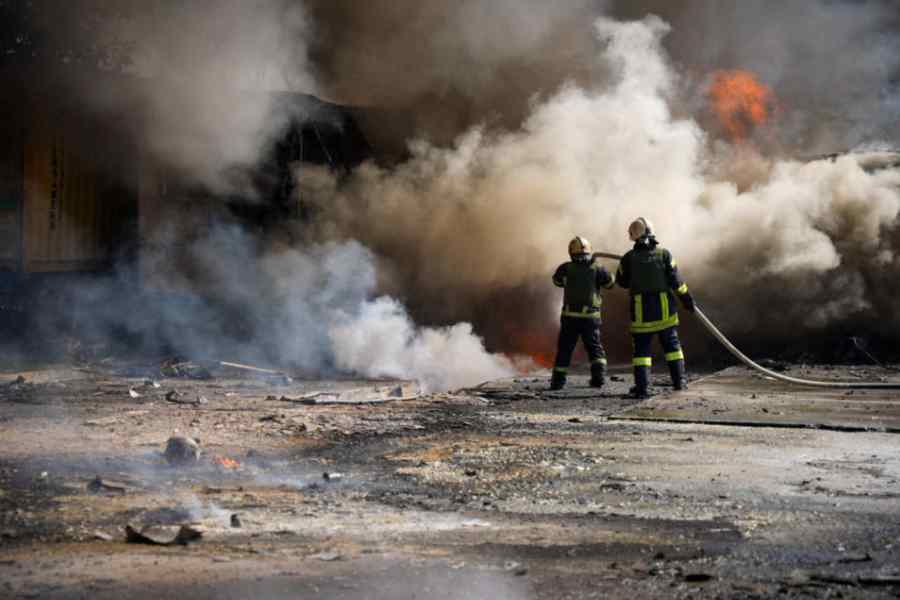Near the front lines in eastern Ukraine: It was a familiar and vexing problem: Russian soldiers were using the dense cover of tree lines to prepare to storm the Ukrainian trenches.
“We used a lot of resources to try and drive them out and destroy them,” said Capt. Viacheslav, 30, the commander of the 68th Separate Jaeger Brigade’s strike drone company known as Dovbush’s Hornets.
But they could not do so, he said in an interview last month.
So they gave a new weapon a newer twist, attaching thermite-spewing canisters to drones and creating a weapon capable of spitting out molten metal that burns at 2,426 degrees Celsius. Soldiers call them “dragon drones”.
Thermite — which was developed a century ago to weld railroad tracks — is a mixture of aluminium and iron oxide. When ignited, it produces a self-sustaining reaction that makes it almost impossible to extinguish.
It was used to devastating effect in both world wars. In Ukraine, it has been used primarily in artillery shells and hand grenades.
Now it is being attached to drones that sweep over Russian defensive positions, raining burning metal over the enemy before crashing. The flames ignite the vegetation that Russian troops use for cover and burn it out, exposing them and their equipment to direct attack.
The dragon drones are yet one more step in the revolution of drone warfare that has transformed the battlefield. Its role as a laboratory for improvisation and adaptation has become a hallmark of this war.
“It worked quite well,” Captain Viacheslav said. Speaking on the condition that only his first name be used in accordance with military protocol, he shared videos of his pilots testing the drones and using them in combat outside Pokrovsk, in eastern Ukraine.
In recent weeks, as more and more of these drones filled the skies across the front, Ukrainian soldiers began posting dozens of videos of the attacks on social media, hoping to spark fear along with fire.
It did not take long for the Russians to begin producing dragon drones of their own.
Andrey Medvedev, a Moscow politician, posted a video on Telegram last month showing Russian troops using drones to pour fire on Ukrainian soldiers. He included a quote from “Game of Thrones”: “Dreams didn’t make us kings. Dragons did.”
The use of thermite is not barred under international law, but the use of such incendiary weapons in civilian areas is prohibited under the Convention on Certain Conventional Weapons, Cold War-era guidance issued under the auspices of the United Nations.
There has been no significant criticism of dragon drones, which are known to have been used only against military targets, not against civilians.
The dragon drones represent only a tiny fraction of the rapidly expanding fleets being employed by both armies as they engage in an urgent arms race to innovate and mass produce drones that fly faster and farther, while becoming ever deadlier.
President Volodymyr Zelensky of Ukraine said early this month that his country was on pace to produce 1.5 million drones this year, and he wants to ramp up production to four million annually.
Earlier this year, Ukraine created the Unmanned Systems Force, the world’s first military branch dedicated to drone warfare.
Russia, for its part, has effectively turned its economy to supporting its military industrial complex, recently announcing a proposed budget for next year with a 25 per cent increase in military spending, to more than $145 billion.
New York Times News Service











